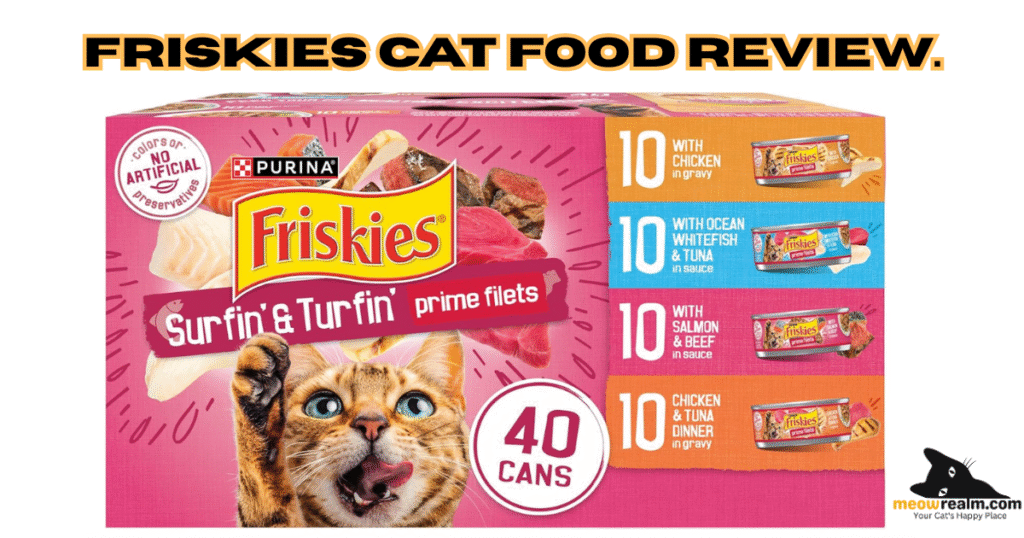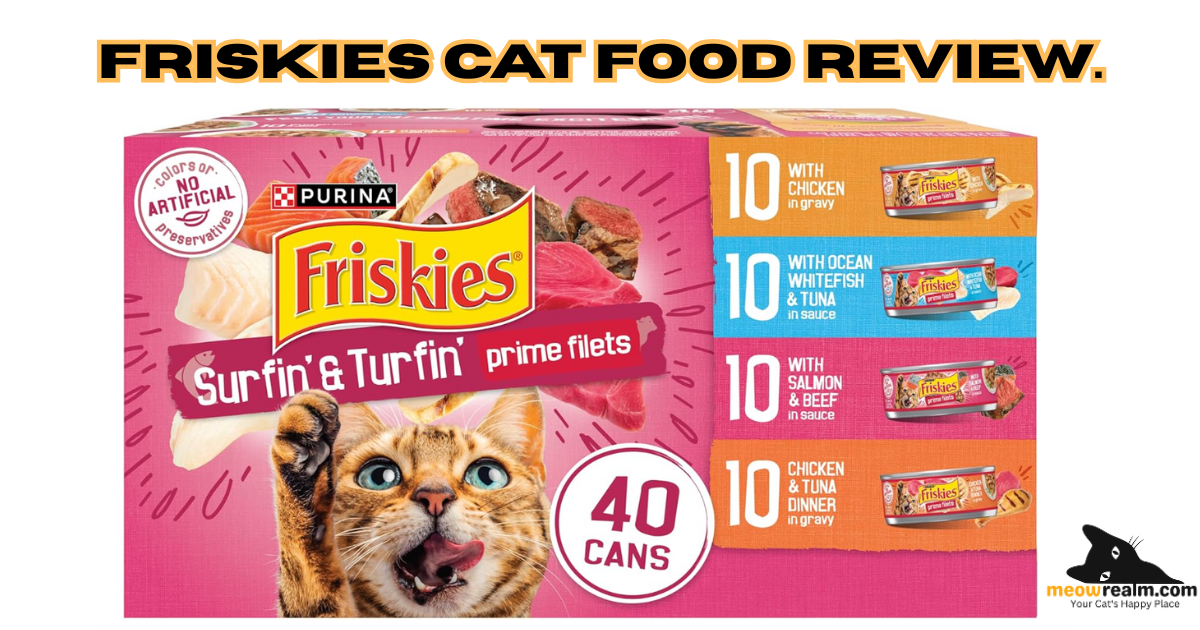Introduction
Friskies Cat Food Let’s face it—when you’re shopping for cat food, affordability matters. Friskies is one of the most recognized names on the shelf, but is it still a smart choice in 2025? With more premium brands entering the market and growing awareness around feline nutrition, many cat owners are rethinking what goes in their pet’s bowl. This review dives into what Friskies really offers—beyond the price tag.
Table of Contents

Price Breakdown: Still Budget-Friendly?
As of mid-2025, here’s what you can expect to spend:
- Wet food (canned varieties): Typically ranges from $0.70 to $0.90 per can (5.5 oz). That’s about $0.90–$1.20 per day for an average adult cat eating two meals.
- Dry kibble: Large bags cost around $15–$20 for 16 lbs, making it under $0.20 per day.
That keeps Friskies firmly in the budget category. But what do you actually get for that price?
Ingredient Quality: What’s Really Inside?
Wet Food Highlights
Friskies wet recipes usually lead with meat by-products, followed by water, liver, and sometimes fish or poultry. These are supplemented with synthetic vitamins and minerals.
- Pros: High moisture content (great for hydration), decent protein.
- Cons: Use of unnamed meats, added gums (like carrageenan), artificial flavors in some lines.
Dry Food Breakdown
The dry food formulas often feature corn gluten meal, meat and bone meal, and soybean meal before any actual meat.
- Pros: Inexpensive, shelf-stable, cats tend to love the taste.
- Cons: High in carbs, low in moisture, contains artificial dyes (e.g., Yellow 5, Red 40).
Bottom line: Wet food is nutritionally superior to dry, especially for cats prone to urinary issues or dehydration.
✅ Pros and ❌ Cons – Friskies Cat Food
What Friskies Does Well:
- Affordability – One of the most cost-effective options out there.
- Availability – Sold in nearly every grocery and pet store.
- Palatability – Many cats genuinely love the taste.
Where It Falls Short:
- Low-grade proteins – Relies on by-products and plant-based fillers.
- Additives – Several recipes include food coloring and artificial flavoring.
- Not ideal long-term – Especially for cats with health sensitivities.
What Vets and Cat Owners Are Saying
Veterinarians generally agree: Friskies wet food can be a viable short-term or supplemental option, but they recommend rotating in higher-protein brands when possible.
On forums and cat groups, owners share mixed reviews:
- “It’s kept my senior cat fed for years—no issues.”
- “My vet said the dry food was too carb-heavy for my diabetic cat.”
- “It’s fine if you’re stuck, but not my go-to anymore.”
In short: it works, but it’s not magic.
How to Use It Smartly
If you stick with Friskies, here’s how to get the best from it:
- Opt for wet over dry. It’s closer to a natural feline diet.
- Choose pate-style over gravy-heavy variants. Less sugar, fewer additives.
- Mix with higher-quality brands when possible. Even a few cans a week can boost variety and nutrition.
- Watch your cat’s weight, coat, and energy. These are signs the food’s working—or not.
Better Options at a Slightly Higher Price
If your budget can flex just a bit, these brands offer a noticeable upgrade:
- Weruva – Real meat, no fillers, high moisture.
- Tiki Cat – Grain-free, species-appropriate recipes.
- Dave’s Pet Food – Budget-conscious but cleaner ingredient lists.
These brands offer more meat, fewer fillers, and no artificial colors—without breaking the bank.
Final Thoughts: Is It Still a Safe Bet?
Friskies isn’t perfect—but it’s not a villain either. If you’re in a pinch, their wet food lines can offer acceptable daily nutrition. Just avoid relying too heavily on the dry formulas, and stay mindful of what’s in each can or bag.
When it comes to feeding your cat on a budget, balance is key. Friskies can play a role in that—just pair it with awareness and variety.
Friskies Cat Food-Friskies Cat Food

